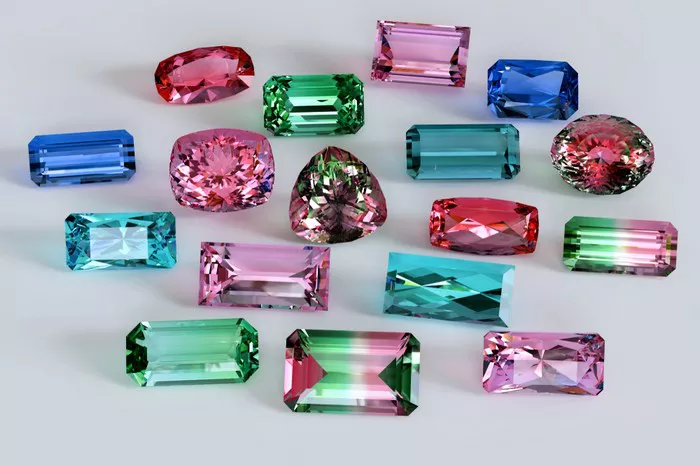Traditionally, French actors graced the stage bedecked in their own jewelry, a practice that often valued brilliance over appropriateness. “Rachel,” the celebrated actress of the 19th century, who rose from humble origins to stardom, serves as a prime example. Before her untimely demise in 1858, she portrayed the title role in Racine’s Phèdre, adorning herself with different jewelry for each act. With her petite frame and fiery spirit, Rachel captivated the hearts of counts, princes, and Napoleons, leaving an indelible mark as a true stage diva.
However, most actors of the time were nearly destitute, and their jewelry was predominantly of the costume variety. These imitations, often inspired by portraits of European nobility, featured precious jewelry-making techniques, such as stars attached to diadems (tiaras) with tiny wires that quivered under the stage lights. Innovations included faux pearls crafted from spun glass and cameos carved from shell rather than stone.
As with fashion, Paris took center stage in this world of theatrical jewelry. Elaborate copies, while exquisite, did not come cheap.
These captivating objects are now on display in an enthralling exhibition of stage jewelry from the collection of the Comédie Française, the renowned national theater founded in the 17th century. This exhibition, which will soon open in Paris, marks a historic occasion, being the first to be hosted at L’École School of Jewelry Arts. The venue is a former aristocratic mansion on Boulevard Montmartre, just a stone’s throw from the heart of luxury jewelry retailing, Place Vendôme.
The Hôtel de Mercy-Argenteau, built in 1778, once belonged to Count Mercy-Argenteau, the Austrian ambassador responsible for arranging the marriage of Marie-Antoinette to Louis XVI. When the French Revolution engulfed the queen, he discreetly absconded with her jewel box. Although the mansion’s gardens were sold off, the grand house endured, now nestled between a Starbucks and a Hard Rock Cafe. The likes of composers Rossini and Boieldieu called this place home after it was expanded and divided into apartments.
While much has changed, some historic rooms and staircases remain intact, and the opening of L’École offers the public a rare glimpse inside. Over the past decade, L’Ècole, a private venture, has been dedicated to promoting the art and history of jewelry through classes and lectures in Paris and Hong Kong, with a recent addition in Shanghai. Now, the new venue in former offices of Van Cleef & Arpels provides a larger space to exhibit entire costumes and artworks portraying the jewelry displayed.
One remarkable painting shows the tragic Greek princess Monime in Racine’s Mithridate, attempting to strangle herself with her necklace, which lies abandoned on the floor beside her elaborate gold dress. The acting profession only embraced wardrobe from the late 19th century, but before then, audiences, much to Voltaire’s annoyance, were as interested in the elaborate costumes and jewels as they were in the acting itself. Many plays featured the same jewelry pieces, such as daggers and a massive ceremonial golden fleece necklace worn in various male roles.
Visitors to the exhibition will be treated to a glimpse of Rachel’s jewels, including delicate bangles for her petite wrists. The display also features ambitious jeweled ensembles for Sarah Bernhardt, a legendary figure in French theater. A genuine gold and emerald brooch, the size of a side plate, takes its place in the exhibition, as does a delicate floral crown tossed on stage by Queen Victoria in appreciation of Bernhardt during her tour of England.
One of the exhibition’s highlights is an orientalist headpiece, crafted by Lalique for Julia Bartet, featuring aluminum, faux gems, and stonework. The most recent item is a crown from 1987, designed by Jean-Pierre Barlier for a staging of Racine’s Esther. This crown comprises gold chains, coins, beads, and lapis lazuli sourced from historic Comédie Française components.
Van Cleef & Arpels, a renowned Parisian jewelry house and sponsor of L’Ècole, funded the restoration of items in the Comédie Française’s collection in exchange for their temporary display at L’École. The next exhibition is set to explore the world of pearls.
The aim of L’École, as director Élise Gonnet Pon puts it, is to share “jewelry culture” with all, bridging the gap between specialists and the general public. Their mission is to promote jewelry as a decorative art influenced by various art forms while remaining scientifically accurate and beautiful.
In the realm of jewelry appreciation, L’École’s new Paris venue stands alone.


